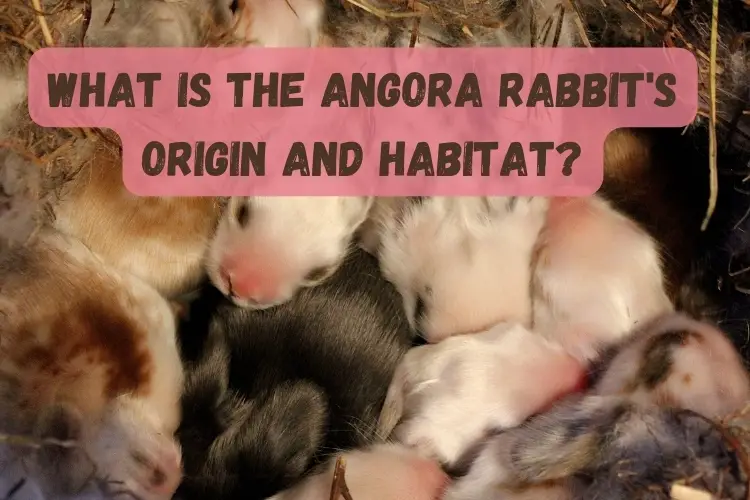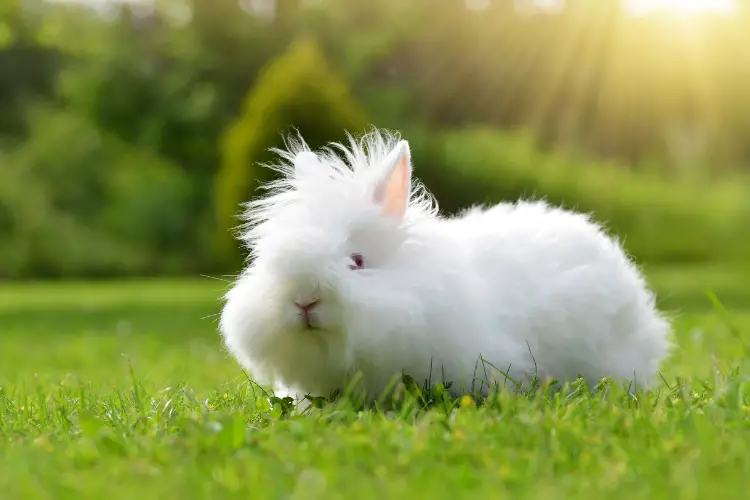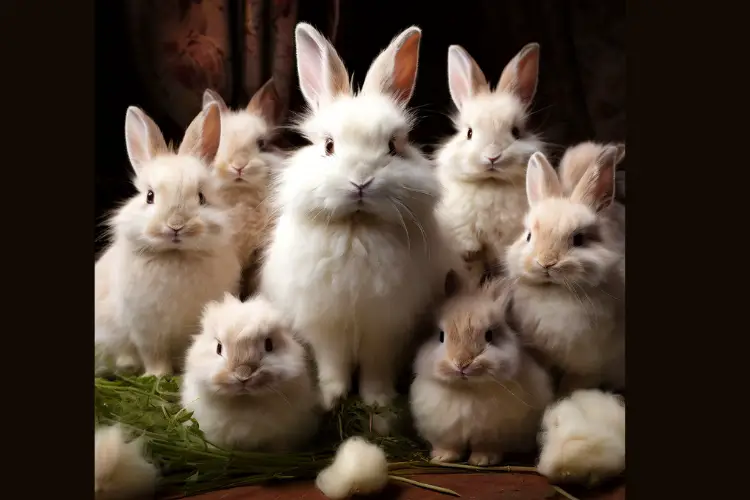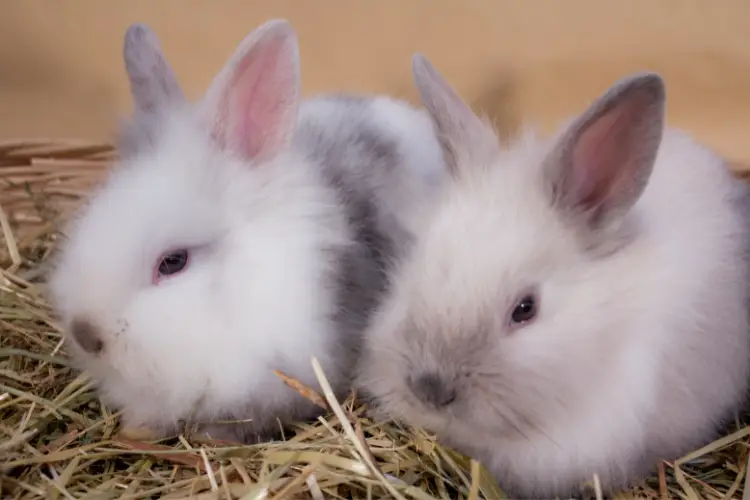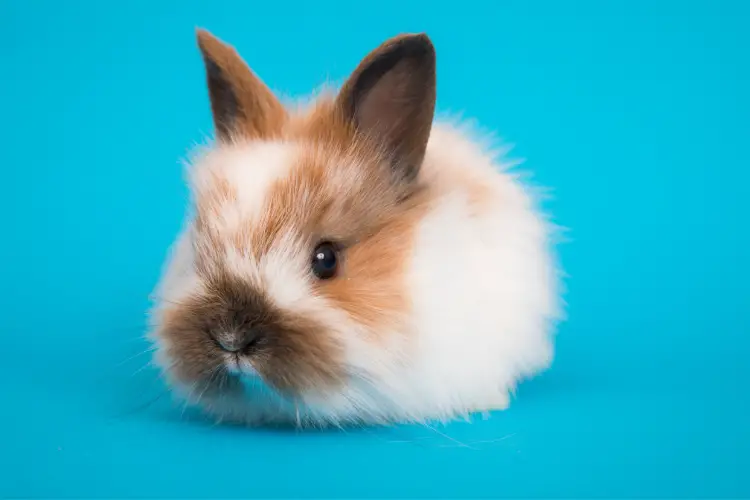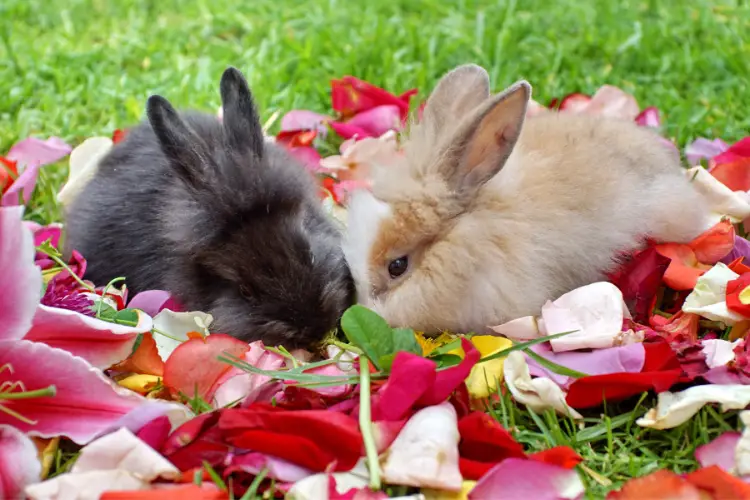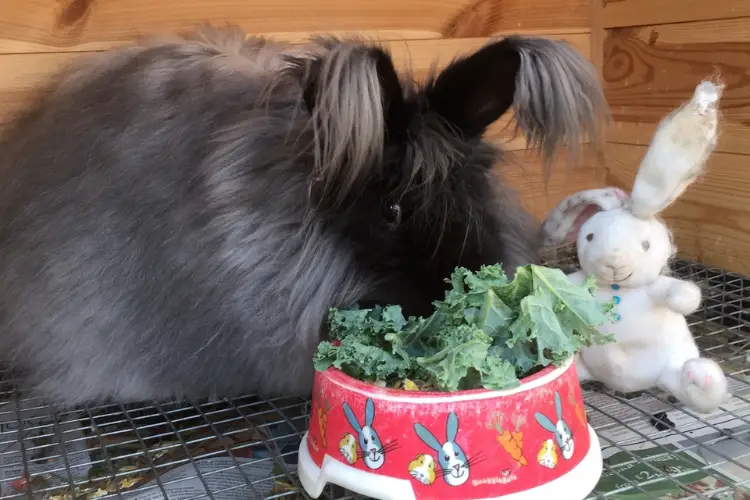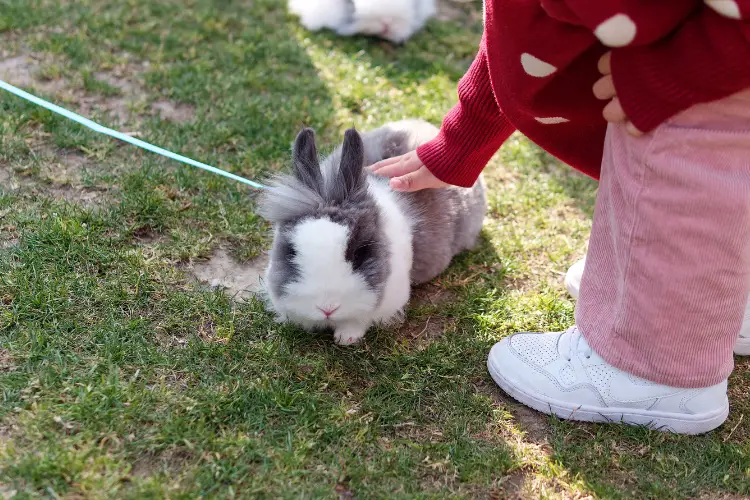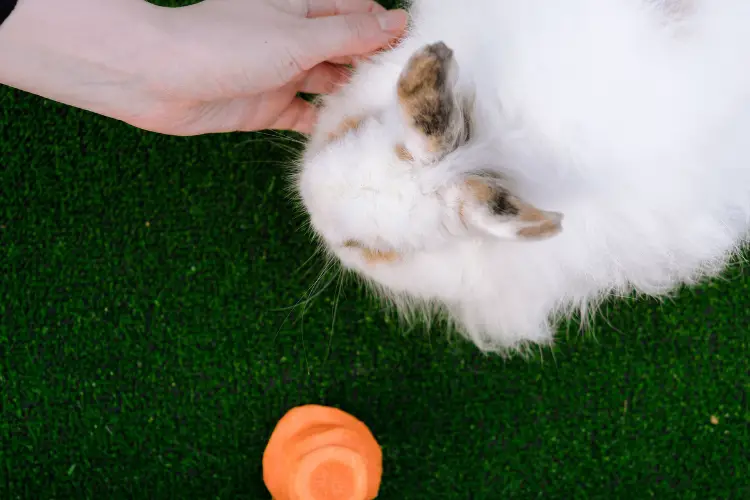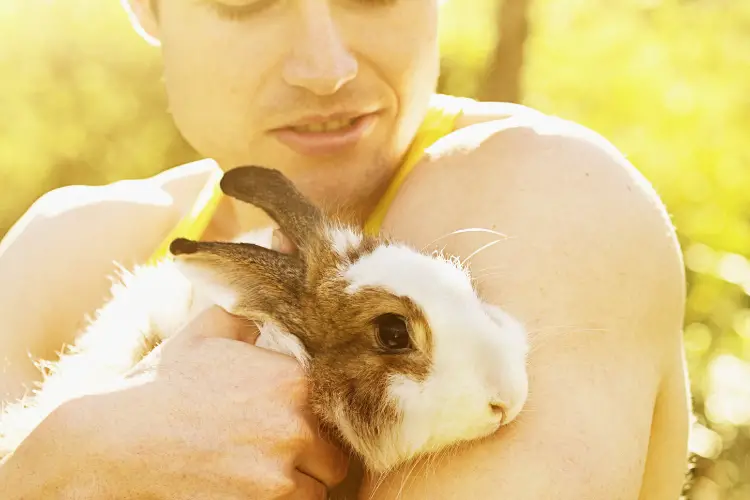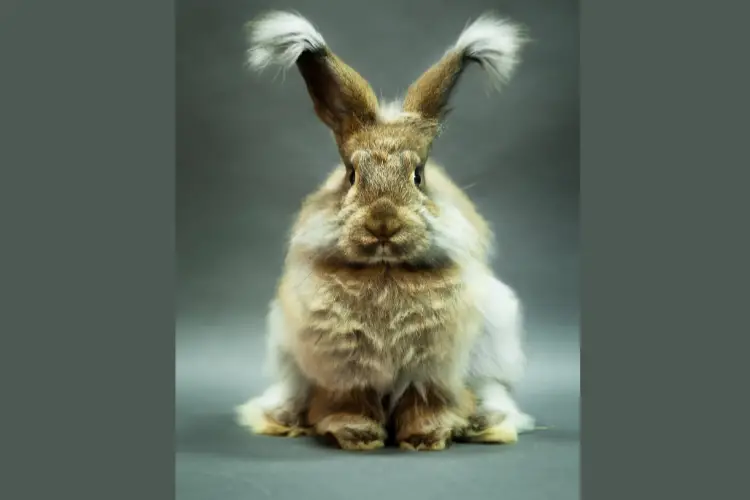The Angora rabbit, with its origins rooted in Ankara, Turkey, is renowned for its luxurious fur and charming demeanor. Having evolved through centuries from a coveted source of warm textiles to a beloved pet and breeding animal, the Angora rabbit’s history is as rich as its coat.
In this blog post guide, we’ll explore the origins, habitats, and various breeds of Angora rabbits, as well as provide insights into their care, temperament, and the joy they bring to their owners.
Key Takeaways
- Angora rabbits originated in Ankara, Turkey, and were first known for their fine fur used in textiles.
- There are four main Angora rabbit breeds: English, French, Satin, and Giant, each with unique characteristics.
- Proper care for Angora rabbits includes regular grooming, a suitable living environment, and a balanced diet.
- Angora rabbits are sociable animals with a calm and docile temperament, making them excellent companions.
- When acquiring an Angora rabbit, it’s important to connect with reputable breeders and prepare for their specific needs.
The Historical Roots of Angora Rabbits
Ankara, Turkey: The Birthplace of the Angora
The Angora rabbit, with its origins steeped in the rich history of Ankara, Turkey, is renowned for its luxurious fur. Ankara’s contribution to the world of textiles is significant, with the city giving its name to the exquisite Angora wool.
This wool is shorn from the rabbits and is celebrated for its softness and warmth, making it a coveted material for clothing and accessories.
The Angora rabbit’s journey from a regional treasure to a global phenomenon began in the 18th century. It was during this time that these rabbits were first recognized for their unique qualities. The Angora breed has since evolved into several distinct types, each with its own set of characteristics.
- English Angora
- French Angora
- Satin Angora
- Giant Angora
These breeds are now bred worldwide, with each offering a different experience for breeders and pet owners. Despite their global presence, the Angora rabbits still carry the legacy of their birthplace, Ankara, which remains a pivotal chapter in their storied past.
The Spread of Angora Rabbits Beyond Turkey
Following their domestication in Ankara, Angora rabbits began to captivate breeders and enthusiasts beyond the borders of Turkey. By the 18th century, these rabbits were introduced to Europe, where their luxurious fur quickly became a coveted commodity.
European nobility and textile manufacturers alike sought the Angora rabbit’s fine wool, recognizing its value in the production of high-quality garments and accessories.
The expansion of Angora rabbit breeding was not merely a matter of trade but also a reflection of the breed’s adaptability and appeal. In various countries, the rabbits were selectively bred to enhance certain traits, leading to the development of different breeds tailored to specific climates and purposes.
The table below outlines the initial spread of Angora rabbits from Turkey to other regions:
| Region | Century of Introduction | Notable Contributions |
|---|---|---|
| Europe | 18th | Luxurious wool for textiles |
| America | 20th | Diversification of breeds |
| Asia | 19th | Adaptation to varied climates |
Today, the Angora rabbit is a global presence, with breeders and enthusiasts continuing to cherish and refine this ancient breed’s characteristics.
Angora Rabbits in the Modern Era
Today, Angora rabbits are celebrated for their luxurious fur and charming demeanor, making them popular both as pets and for their wool production. Their fine fur continues to be a highly sought-after material for clothing and crafts, maintaining the breed’s historical significance.
Angora rabbits are now bred worldwide, with a particular emphasis on ethical breeding practices to ensure the well-being of these animals. The Angora rabbit’s wool yield can vary, but on average, a rabbit produces 600 to 700 grams of wool per year, reflecting their prolific nature as wool producers.
The modern Angora rabbit has adapted well to various living environments, from small-scale domestic settings to larger breeding farms. Their care involves regular grooming, a suitable living environment, and a balanced diet to maintain their health and the quality of their wool.
Understanding Angora Rabbit Breeds
The Four Main Breeds: English, French, Satin, and Giant
Among the diverse world of rabbits, the Angora stands out for its distinctive wooly appearance and gentle demeanor. The main breeds of Angora rabbits include the English, French, Satin, and Giant, each with unique characteristics that cater to different preferences and purposes.
The English Angora is renowned for its soft, dense fur and is often the smallest breed, making it a popular choice for those with limited space.
The French Angora is slightly larger and is distinguished by its wool-free face and ears. Satin Angoras are known for their glossy fur that has a satin-like sheen, while the Giant Angora is the largest breed, prized for its substantial wool production.
- English Angora: Small, dense fur
- French Angora: Wool-free face, larger size
- Satin Angora: Glossy, satin-like fur
- Giant Angora: Largest breed, high wool yield
When considering an Angora rabbit, it’s essential to understand the grooming needs and space requirements of each breed. Whether you’re looking for a pet, a show animal, or a wool producer, there’s an Angora breed that can meet your needs.
Characteristics of the English Angora Rabbit
The English Angora rabbit is renowned for its distinctive, long, soft fur that requires regular grooming to maintain its luxurious texture. Their friendly nature and docile temperament make them excellent companions, well-suited for families and individuals alike.
English Angoras exhibit a wide variety of colors and patterns, offering a rich selection for prospective owners. This breed’s calm demeanor is complemented by its social inclination, as they enjoy interacting with their human counterparts.
Key Characteristics:
- Long, soft, continuously growing fur
- Requires frequent grooming to prevent matting
- Available in a multitude of colors and patterns
- Known for their calm and gentle nature
Owners of English Angora rabbits often find themselves captivated by the breed’s charm and beauty. Their adorable appearance and the pleasure of their company make them a beloved choice among rabbit enthusiasts.
The Unique Traits of German Angora Rabbits
The German Angora rabbit stands out with its long and dense wool, which is a hallmark of the breed. This wool not only provides an aesthetic appeal but also necessitates a commitment to regular grooming to prevent matting and maintain the fur’s softness.
Despite their substantial size, these rabbits carry themselves with a certain grace and elegance. German Angoras are known for their calm and docile nature, making them excellent companions for individuals and families alike.
They are adaptable to both indoor and outdoor environments and exhibit a playful demeanor with their owners. Here are some key takeaways about the German Angora rabbit:
- Long, soft, and luxurious fur
- Calm and docile temperament
- Requires regular grooming
- Available in various types, including English, French, Giant, and Satin
- Can be purchased from reputable breeders
Their serene disposition and the joy they bring to their owners make German Angora rabbits a beloved pet. As one breeder puts it, their silky fur and gentle nature are simply enchanting.
Caring for Angora Rabbits
Grooming Needs of Angora Rabbits
Grooming is a critical aspect of Angora rabbit care, particularly for breeds like the German Angora with their long, luxurious wool. Regular grooming is necessary to prevent matting, tangles, and the risk of wool block, which can be detrimental to their health.
A grooming routine not only maintains the rabbit’s coat but also strengthens the bond between the rabbit and its owner. To ensure proper grooming, follow these steps:
- Brush their fur at least once a week using a soft brush or comb designed for rabbits.
- Gently remove any tangles or mats to avoid causing discomfort.
- Regularly trim their nails to prevent overgrowth, which can lead to discomfort or injury.
Starting the grooming process at a young age can help acclimate your Angora rabbit to the routine, making it a more enjoyable experience for both of you. Pay special attention to areas with dense fur growth, such as the neck, chest, and hindquarters.
Regular grooming sessions are not just about coat care; they also provide an opportunity to check for any signs of health issues and ensure your Angora rabbit is in top condition.
Creating a Suitable Living Environment
Creating a suitable living environment is essential for the well-being of Angora rabbits. A spacious enclosure is paramount, allowing them to move freely and exhibit natural behaviors. Bedding materials such as hay or straw not only provide comfort but also contribute to the rabbits’ need to forage and nest.
Proper ventilation is another critical aspect to consider. Angora rabbits are prone to overheating due to their thick fur; therefore, ensuring a well-ventilated but draft-free space is vital for their health. Regular cleaning of the enclosure is necessary to maintain a hygienic environment and minimize the risk of disease.
Here are some key points to remember when creating a living space for your Angora rabbit:
- Spacious enclosure: at least four times the size of the rabbit
- Comfortable bedding: hay or straw
- Ventilation: adequate but draft-free
- Cleanliness: regular cleaning to prevent disease
By providing a stress-free and comfortable habitat, you can promote the health and happiness of your Angora rabbit.
Diet and Nutrition for Optimal Health
Ensuring a balanced diet is crucial for the health and longevity of Angora rabbits. A diet rich in hay, fresh vegetables, and a controlled amount of pellets is fundamental for their well-being. Hay provides the necessary fiber for proper digestion and should be available at all times.
Fresh vegetables add essential nutrients and variety to their diet, while pellets offer concentrated nutrients that are also important in moderation.
It’s important to monitor the amount of pellet food given to prevent obesity and other health issues. Fresh, clean water must be constantly accessible to support their hydration and overall health. Regular veterinary check-ups are vital to maintaining their dietary balance and catching any health concerns early on.
Here is a simple guideline for feeding your Angora rabbit:
- Unlimited hay for constant grazing
- Fresh vegetables daily for added nutrition
- A small portion of pellets to supplement their diet
- Continuous access to clean water
By adhering to these dietary principles, you can help ensure your Angora rabbit enjoys a healthy and happy life.
Recognizing and Addressing Common Health Issues
Angora rabbits, like all pets, are susceptible to certain health conditions. Being proactive in recognizing common health issues is crucial for their well-being.
Minor conditions such as dental disease, parasites, and viral infections can often be managed with prompt attention and care. However, serious conditions like spinal injuries require immediate veterinary intervention.
It’s important to monitor your Angora rabbit for symptoms of illness. Here’s a list of some common ailments to watch for:
- Hairballs
- Tapeworm
- Roundworm
- Pinworm
In the case of more severe diseases such as VHD (viral hemorrhagic disease) or myxomatosis, prevention through vaccination and maintaining a clean habitat is key. Regular check-ups with a veterinarian are essential to catch and address any health issues early.
Lastly, changes in behavior or appetite should not be ignored, as they can be indicators of underlying health problems. A high-fiber diet, regular grooming, and a cool, well-ventilated environment can help prevent issues like wool block and heat stress, ensuring your Angora rabbit stays healthy and happy.
The Angora Rabbit as a Companion and Breeding Partner
The Temperament and Sociability of Angora Rabbits
Angora rabbits, particularly the German Angora, are renowned for their gentle and docile nature, making them excellent companions. Their calm demeanor is well-suited for various living environments and they often form strong bonds with their human caretakers.
These rabbits flourish in tranquil settings where they can receive ample care and affection. Socialization is key for Angora rabbits, as they are inherently friendly and enjoy interaction.
It’s important for owners to spend quality time with their rabbits to foster a nurturing relationship. Below is a testimonial from a breeder emphasizing the Angora’s amiable personality:
- “German Angora rabbits are not only beautiful but also have an incredible temperament. I fell in love with them the moment I saw their silky fur and gentle nature. As a breeder, it’s essential to maintain the breed’s high standards and ensure that each rabbit finds a loving home.” – Jane Smith, German Angora Rabbit Breeder
When considering an Angora rabbit as a pet, it’s crucial to connect with reputable breeders who prioritize the animals’ health and happiness. This ensures that the rabbit you bring into your home will be a joyful and affectionate addition to your family.
Breeding Angora Rabbits: Considerations and Practices
Breeding Angora rabbits is a rewarding venture that requires careful planning and knowledge of the breed’s specific needs. Before embarking on breeding these unique animals, it’s crucial to understand their temperament, grooming requirements, and common health concerns.
When considering breeding Angora rabbits, it’s important to assess the potential costs involved. This includes not only the initial investment but also the ongoing expenses for proper care and grooming. German Angora rabbits, for instance, are known for their luxurious fur, which necessitates regular grooming to prevent matting and wool block.
Here are some key considerations for breeding Angora rabbits:
- Ensure you have a thorough understanding of the breed’s characteristics.
- Select healthy breeding pairs with desirable traits.
- Provide a spacious and well-ventilated living environment.
- Maintain a balanced diet and monitor for any health issues.
By adhering to these practices, breeders can help ensure the well-being of their rabbits and the success of their breeding program.
The Joy of Owning an Angora Rabbit
Owning an Angora rabbit can be a deeply rewarding experience, offering a unique blend of companionship and aesthetic pleasure. These gentle creatures are known for their friendly and docile temperament, making them excellent pets for individuals and families alike.
The Satin Angora Rabbit, in particular, is praised for its suitability for families with children, thanks to its gentle nature.
Angora rabbits are not only cherished for their personalities but also for their luxurious fur, which is a delight for wool enthusiasts. The English Angora rabbit, with its long, soft fur in a variety of colors and patterns, captivates owners with its beauty and charm. Here are some key traits of the English Angora rabbit:
- Long, soft fur that requires regular grooming
- A wide range of stunning colors and patterns
- A calm and gentle nature, ideal for companions of all ages
Whether you’re drawn to the elegance of the German Angora or the charm of the English variety, these rabbits are sure to bring joy and warmth into your home. When considering an Angora rabbit, it’s crucial to find a trusted breeder who prioritizes the health and well-being of their animals, ensuring a happy and healthy addition to your family.
Acquiring an Angora Rabbit
Finding Reputable Angora Rabbit Breeders
When embarking on the journey to bring a German Angora rabbit into your home, it is crucial to connect with a breeder who not only specializes in the breed but also upholds the highest standards of care. Reputable breeders prioritize the health and well-being of their rabbits, ensuring that you receive a pet that is both healthy and socialized.
Prices for German Angora rabbits can vary, influenced by factors such as pedigree and age. Here are some steps to help you find a trustworthy breeder:
- Conduct thorough research online and through rabbit enthusiast communities.
- Visit potential breeders to observe the conditions in which the rabbits are raised.
- Ask for references and speak to previous customers about their experiences.
- Ensure the breeder provides detailed health records and pedigree information.
By following these guidelines, you can find a breeder who shares your passion for the well-being of these affectionate and elegant creatures, making your experience of owning a German Angora rabbit truly rewarding.
Preparing for Your New Angora Rabbit
Before welcoming an Angora rabbit into your home, it’s essential to understand the commitment involved. Angora rabbits require regular grooming due to their long, luxurious fur.
You’ll need to invest in the right tools, such as a soft brush or comb, and dedicate time to grooming sessions to prevent matting and ensure their coat remains healthy.
Creating a comfortable living space is also critical. Your new pet will need a spacious enclosure that is at least four times their size, with proper bedding and ventilation to mimic their natural habitat. Here’s a checklist to help you prepare:
- Spacious, well-ventilated enclosure
- Comfortable bedding material
- Grooming tools (brush, comb, nail clippers)
- Healthy diet (fresh hay, pellets, vegetables)
- Regular health check-ups
Remember, the time and effort you put into preparing for your Angora rabbit will greatly contribute to their well-being and happiness in their new home.
Key Takeaways Before Purchasing an Angora Rabbit
Before welcoming an Angora rabbit into your home, it’s crucial to understand the commitment they require. German Angora rabbits are renowned for their luxurious fur, which necessitates regular grooming to maintain its condition and prevent matting.
Their calm and docile nature makes them excellent companions for individuals and families alike. When considering an Angora rabbit, remember that they come in various breeds, each with unique characteristics.
The English Angora, for instance, is celebrated for its long, soft fur and is available in a multitude of colors and patterns. Here are some key points to keep in mind:
- Regular grooming is essential to keep their fur in prime condition.
- A suitable living environment is necessary to ensure their well-being.
- Diet and nutrition are vital for their health, with specific needs that differ from other rabbit breeds.
In summary, while the Angora rabbit can be a delightful addition to your life, it’s important to be prepared for the responsibilities that come with owning such a special breed. Ensure you source your rabbit from reputable breeders and have all the necessary preparations in place to provide a loving and nurturing home.
Conclusion
The Angora rabbit, with its origins rooted in Ankara, Turkey, has evolved into a beloved and widespread breed, cherished for its soft, luxurious fur and amiable nature.
From the English to the German Angora, each variety offers unique characteristics that cater to different preferences, whether it’s for companionship or wool production. Their care, while requiring attention to grooming and health, is rewarded by the joy and warmth they bring into homes around the world.
As we’ve explored their history, physical traits, and the nuances of their care, it’s clear that the Angora rabbit is more than just a pet; it’s a symbol of elegance and comfort that continues to captivate the hearts of animal enthusiasts everywhere.
FAQs:
What is the origin of Angora rabbits?
Angora rabbits originate from Ankara, Turkey, and their history dates back to the 18th century. They were highly valued for their soft and warm fur.
What are the main breeds of Angora rabbits?
The four main breeds of Angora rabbits are English, French, Satin, and Giant, each with unique characteristics and qualities.
What distinguishes the English Angora rabbit breed?
The English Angora rabbit is known for its long, soft fur, friendly temperament, and its love for socializing with humans. They are also sought after for their wool by enthusiasts.
How should Angora rabbits be groomed?
Angora rabbits require regular grooming to maintain their long, silky fur, especially breeds like the German Angora, which are known for their abundant wool.
What are common health issues in Angora rabbits?
Common health issues for Angora rabbits include wool block, dental problems, and skin conditions, all of which require attentive care and regular check-ups.
Where can I find reputable Angora rabbit breeders?
Reputable Angora rabbit breeders can be found through rabbit clubs, online directories, and breed-specific organizations that prioritize the health and well-being of the rabbits.

